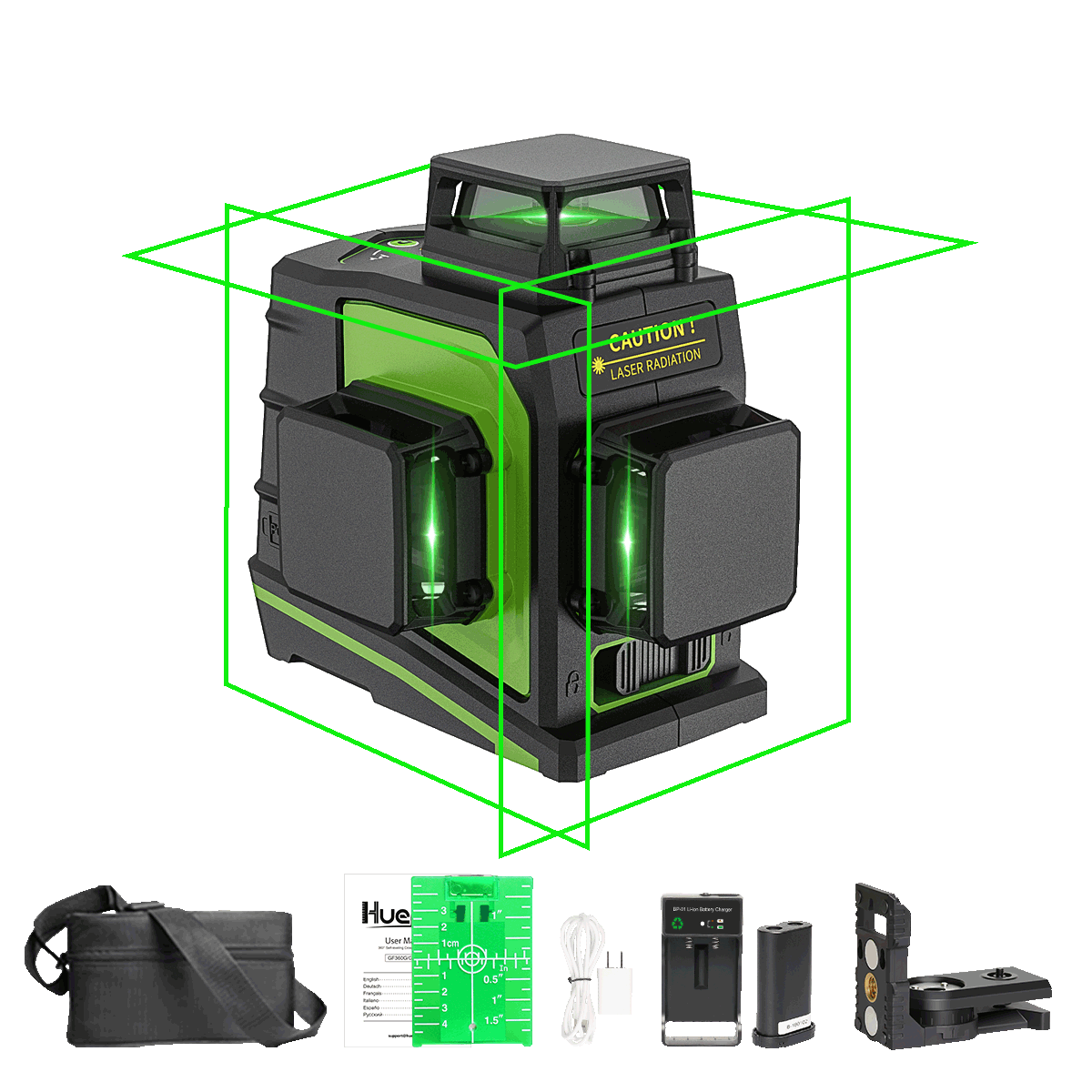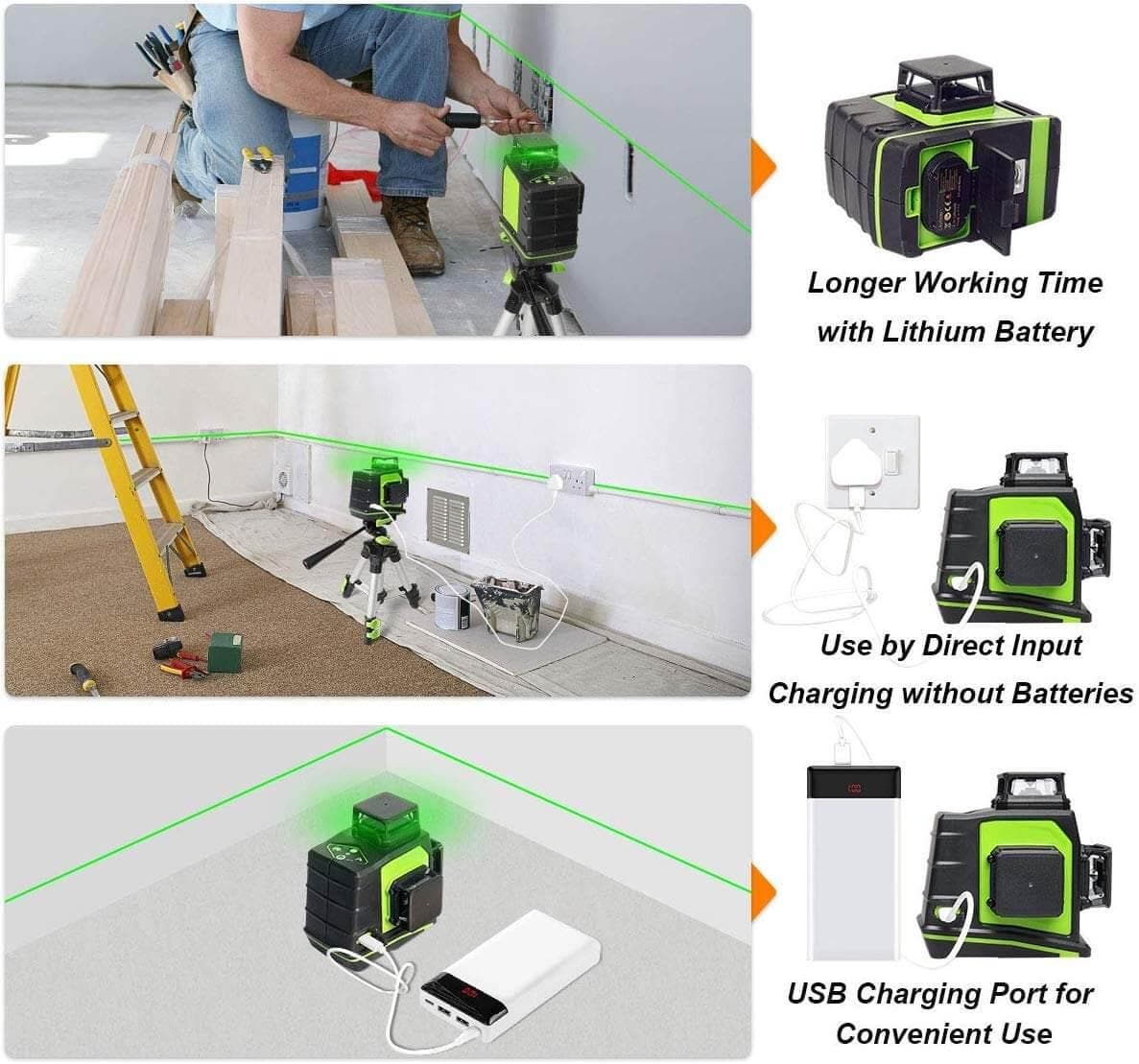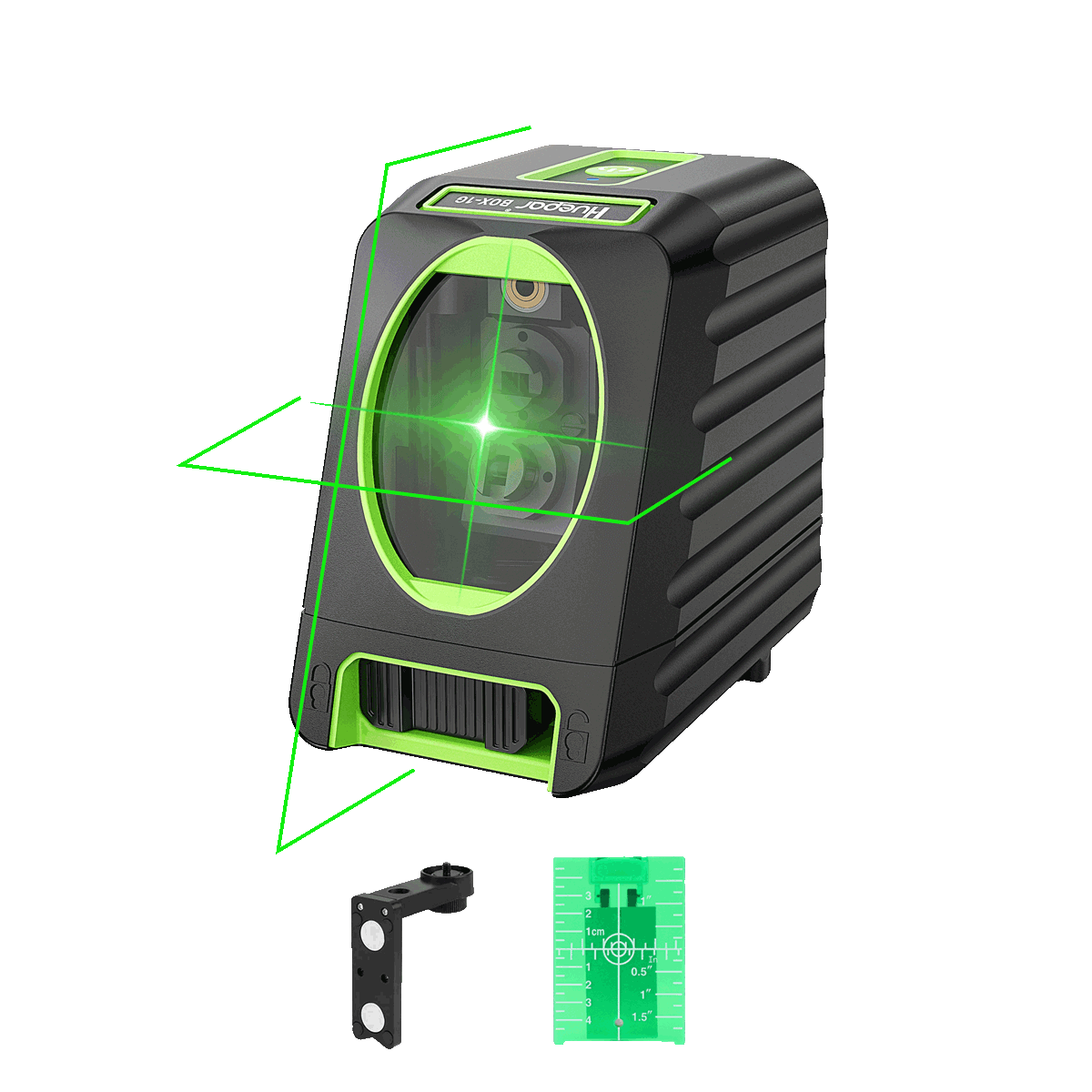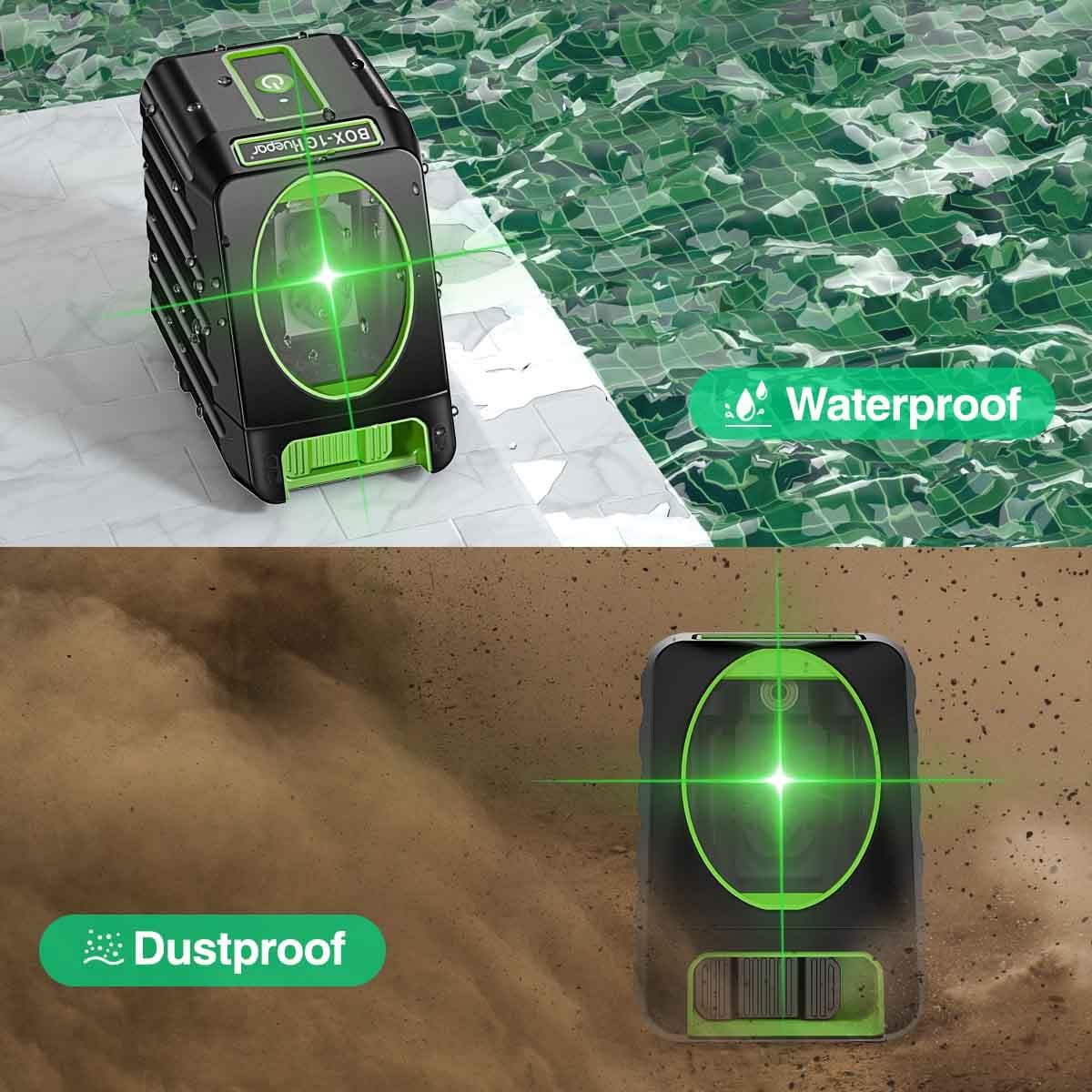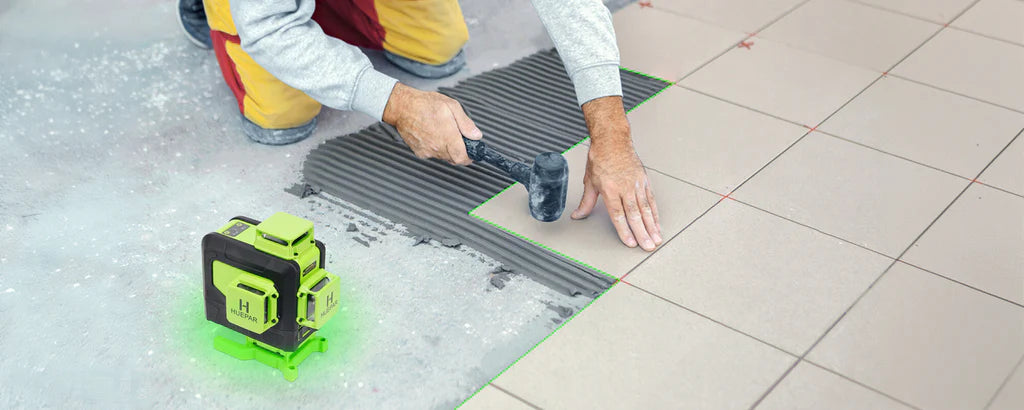
How to Use a Laser Level to Level Ground?
A laser level is a tool that projects a laser beam onto a surface, thus creating a precise reference line or plane for leveling and alignment purposes. Unlike the traditional bubble levels, the laser levels emit a very visible and quite accurate laser beam, thus allowing the slightest deviation from a level surface to be more easily detected.

There are several types of laser levels available, each designed for specific applications:
-
Rotary Laser Levels: These tools emit a rotating laser beam, thus laying down a level plane within a 360-degree radius. This usually applies to projects with higher scales, including site preparation like laying foundations, the creation of drainage routes, and the grading of landscapes.
-
Line Laser Levels: As the name suggests, this is a straight projected line on a laser which happens to be essential for alignment, such as cabinetry alignment, the hanging of pictures, or simply tile and flooring installation.
-
Dot Laser Levels: These compact devices project several laser dots onto surfaces, allowing for point-to-point leveling and alignment tasks with high accuracy.
-
Cross-Line Laser Levels: These are versatile tools that project two laser lines at right angles to each other, in the form of a cross. They are useful in a wide range of applications, from hanging drywall to laying out partitions, or aligning pipes and conduits.
The advantages of laser levels over more conventional methods of leveling, like spirit levels or water levels, are that they guarantee accuracy in measurements and alignments. Additionally, it is much easier to work with laser levels, as this bright beam of the laser is visible from far away, even in poor light conditions. They save much time and effort since there will be no need to go around checking and adjusting the bubble vials or water levels.
How to Use a Laser Level to Level Ground?
Setting Up the Laser Level
The first step in any ground leveling using a laser level is proper setup. Find a good, stable spot for the laser level where it can see, line-of-sight, the entire work area. Avoid setting up near sources of vibration, such as heavy machinery or high-traffic areas.
Next, set the laser level on a robust tripod. Open the legs of the tripod to the desired height, making sure that the tips of the legs are on the ground. Adjust the lengths of the legs until the base of the laser level is relatively level.
With the tripod set, start leveling the laser head. Most lasers have an inbuilt bubble vial or electronic levelling system. Level the laser head carefully by minutely changing the lengths of the tripod legs or even the leveling screws on the laser level until the bubble is centered or the indicator is perfectly level.
Now that the laser level is properly aligned, it's time to fire it up and align the laser beam. Turn the head of the laser so that the beam covers the work area, appearing clear and unhindered in all parts. Raise or move the laser level to an appropriate height or position that will give maximum visibility and area coverage.
Following these steps for the correct setting of the laser level will get you ready for accurate measurement and leveling of the ground for your project.

Measuring and Adjusting Ground Level
With the laser level set up and leveled, you are ready to start taking your elevation measurements across the work area. You'll need to slowly move the laser level horizontally to sweep the beam across the space. Carefully observe the laser line and note the low or high spots where the ground dips below or rises above the desired level.
As you identify these areas, use marking tools like stakes, flags, or spray paint to indicate the spots that need adjustments. For low spots, you'll need to add soil, gravel, or other fill material to bring the ground up to the desired level. Conversely, for high spots, you'll need to remove excess soil or level the ground down.
After having made the necessary adjustments, either by filling in low spots or removing the material from high spots, it is important to recheck the area with the laser level. Repeat the scanning process, continuing to make adjustments until the entire work area is level and consistent with the laser line.
This process of measurement, marking, adjusting, and rechecking might need to be repeated multiple times, especially for larger areas or more significant elevation changes. Patience and paying great attention to detail are crucial in getting a perfectly even surface with the help of a laser level.
Tips for Optimal Laser Level Usage
Achieving precise and accurate ground leveling with a laser level requires paying attention to several factors. Firstly, surface stability is crucial. Ensure that the surface you're working on is firm and won't shift or settle during the leveling process. Soft or loose soil can lead to inaccurate measurements and compromise the final result.
Investing in high-quality accessories can also make the difference. A sturdy tripod with adjustable legs and an integrated bubble vial helps you set up the laser level correctly and maintain stability during the process. Besides, it is highly recommended to purchase a laser level either with an integrated rechargeable battery or one that is powered by disposable batteries for extended use.
Other factors that might affect the working of your laser level involve environmental ones. For example, direct sunlight may not allow one to see the laser beam; hence, it is best to work when the conditions are overcast or in the shade of buildings or trees. Temperature changes may also alter the accuracy of the laser level; therefore, the operating temperatures suggested by the manufacturer should be followed.
It is always good practice, however, to double-measure these. Take many readings taken at different angles and sites to ensure your measurements match and are therefore accurate, which may indicate a problematic area that has to be fixed before moving on to the actual leveling.
It is also very important to take proper care of and store your laser level correctly. Clean and store the device according to the manufacturer's instructions, and consider a protective case for protection from accidental damage while transporting or storing.
Finally, selection of the appropriate type of laser level for the specific ground levelling project is important. Laser levels are designed to serve different purposes, starting with small-scale landscaping projects up to large-scale construction areas. Consider the area size you will need to level, the accuracy needed, and the range of the laser level before purchase.
Benefits of Using a Laser Level for Ground Leveling
There are several advantages that come with using a laser level for ground leveling projects. These advantages help in streamlining the process and boosting the quality of work a person is able to do. Among the key benefits one is going to get is the unparalleled precision and accuracy that laser levels provide. Unlike other leveling methods, laser levels eliminate guesswork and human error, thus always leaving a perfectly level surface.
Another great advantage is the aspect of efficiency and time-saving with a laser level. With it, you can quickly and accurately identify high and low spots across the work area and make the necessary adjustments without wasting time and effort on trial and error. This not only speeds up the leveling process but also minimizes the physical labor required to reduce fatigue and increase productivity.
Laser levels are also famous for their ease of use and setup. With a simple tripod and straightforward controls, even the most inexperienced user can quickly get the hang of operating a laser level. This makes laser levels approachable for a wide range of professionals and DIYers, allowing them to take on ground leveling projects with confidence.
In addition to that, laser levels allow flexibility for smaller landscaping projects or large-scale building sites. Whether one is working on leveling a backyard for installing a patio or preparing a foundation for a building, laser levels can adapt to the exact needs of the job for consistent and reliable results.

Common Mistakes to Avoid
Using the wrong type of laser level for your project will result in bad measurements and a waste of time. It is essential to select a laser level that fits the specific requirements of your ground leveling task, taking into consideration area size, desired accuracy, and environmental conditions.
Another common mistake that may take away from the accuracy in your measurements is incorrect set-up. Poor leveling of a laser head or setting tripod legs on unstable ground will lead to skewed readings and, finally, to an uneven surface. Never skip the proper setup of your laser level.
Tripod issues can also undermine your efforts. Using a flimsy or unstable tripod can cause the laser level to shift during operation, leading to inconsistent measurements. Invest in a high-quality tripod designed to support the weight of your laser level and withstand the demands of your work environment.
Obstructions in the path of the laser beam can block or distort the signal, resulting in inaccurate readings. Before beginning your leveling process, carefully scan the work area for potential obstructions such as trees, buildings, or equipment, and ensure a clear line of sight for the laser beam.
Finally, safety breaches may put you and people around you in danger. The laser levels contain concentrated beams of light that can damage eyes if used incorrectly. Always wear protective eyewear and never aim the laser beam directly at people or reflective surfaces. Moreover, always follow the manufacturer's recommendations and take into consideration all the local regulations concerning the safe work with laser levels.
Safety Precautions
Laser levels are incredibly useful tools, but it's crucial to prioritize safety when operating them. Here are some essential safety precautions to keep in mind:
Eye Protection: Laser beams can be harmful to the eyes, particularly at close range. Always wear appropriate safety glasses or goggles designed specifically for laser use. These protective eyewear shields your eyes from direct or reflected laser beams, preventing potential eye injuries or vision impairment.
Stable Setup: Ensure that your laser level is securely mounted on a sturdy tripod or other stable surface. Avoid setting it up on uneven or unstable ground, as this can cause the laser level to topple over, potentially damaging the equipment or causing injury. Take the time to properly adjust and level the tripod before use.
Beam Awareness: Be mindful of where the laser beam is pointing at all times. Never intentionally aim the beam at people, pets, or vehicles, as this can be distracting or potentially harmful. Additionally, be cautious when working in areas with reflective surfaces, as the beam can bounce off and inadvertently shine into someone's eyes.
By following these safety precautions, you can minimize the risks associated with using laser levels and ensure a safe and productive work environment for yourself and those around you.
FAQs about Laser Levels for Ground Leveling
Q: How accurate are laser levels for ground leveling?
Laser levels are highly accurate for ground leveling, with many models having the ability to achieve accuracy within 1/8 inch over 100 feet or better. The accuracy of laser levels makes them ideal for ensuring a perfectly level surface, which is critical in many projects, including laying foundations, installing patios or decks, and creating drainage systems.
Q: What types of laser levels are suitable for ground leveling?
Rotary laser levels or line laser levels with a rotating base are the best types for ground leveling. These project either a continuous horizontal or vertical laser line or plane, and allow you to trace high and low spots easily across a large area. Some models even have self-leveling capabilities that make setup quicker and more convenient.
Q: What are the capabilities and limitations of laser levels for ground leveling?
The laser levels are quite capable in ground leveling, where accurate measurements are availed for a long distance and across uneven terrain. However, there are those limits on its workability. In direct sunlight, a laser level may not work appropriately, and thus working in the field during the day is always not possible because it would be hard to see the beam. Additionally, they will only help you find the high and low spots; the actual adjusting of the ground level is still to be done by hand using shovels, rakes, and soil compactors.


